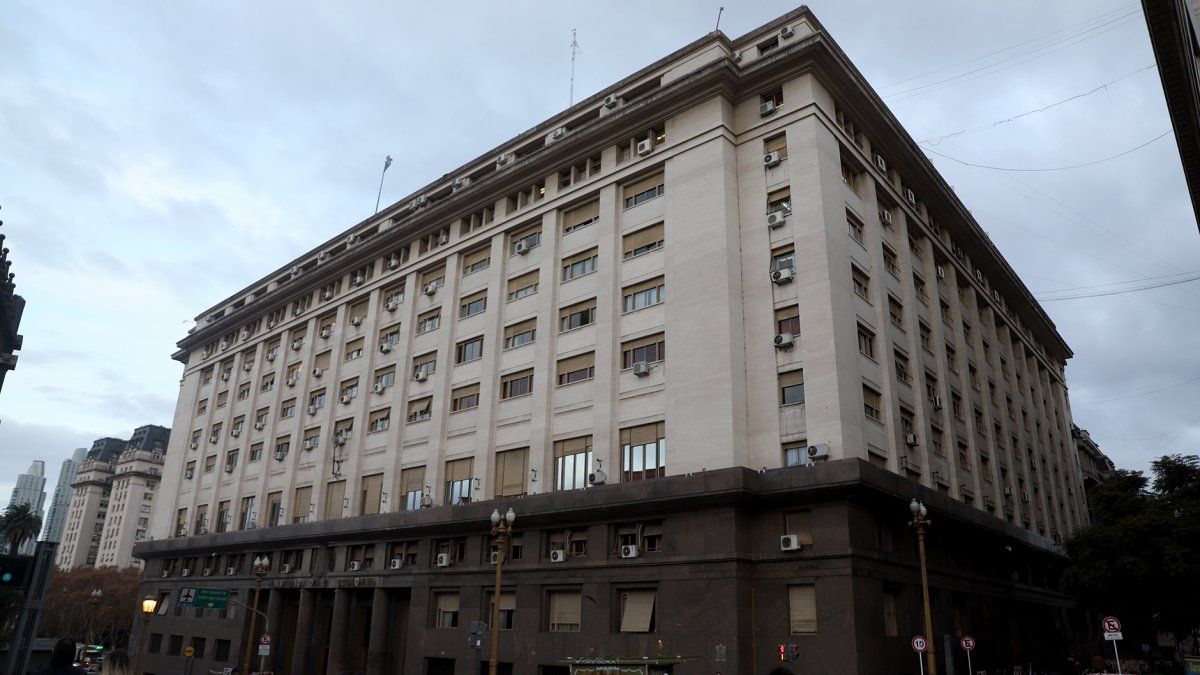The Ministry of This Tuesday, Economy placed $1.35 billion of debt in pesos tied to inflation. The amount obtained will be used to repurchase securities issued by the Treasury that are currently in the possession of the Central Bank. To support the Government’s tender, The BCRA itself winked at the banks: announced a liquidity insurance until 2027, longer than the one offered until now (2025), for those who subscribe to Treasury bonds or bills and anticipated that it will maintain intervention on the peso curve with purchases of securities.
This combo is part of what the economic team promotes as a transition strategy, in which it seeks to “clean up” the Central balance sheet and then advance in lifting the exchange rate and defining the monetary program to follow: either the much-mentioned dollarization, a neoconvertibility or some other type of stabilization plan. Analysts warn that the chosen tools are not risk-free. Meanwhile, the minister Luis Caputo and his Secretary of Finance, Pablo Quirno, must define whether they will soon launch the mega debt swap in pesos for $57 billion that weeks ago began to be analyzed together with the banks.
The debt tender in pesos
On this occasion, the Treasury Palace put on the table three new Boncers with a longer term and zero coupon. These are bonds that adjust for inflation and mature on June 30, 2026, 2027 and 2028.
The investors’ offer was concentrated in the first two instruments. In fact, The placement of the Boncer to 2028, the only one that did not have liquidity insurance from the BCRA, was declared void. In the other two titles, Finance prorated the offers and closed with negative shear rates in real terms. It assigned an effective value of $1.2 trillion in the Boncer to 2026 (TZX26) with an annualized semiannual rate of -1.97%, and of $150,897 million in the Boncer to 2027 (TZX27) with a yield of -0.99%.
Furthermore, Economía announced that, with the pesos obtained, will repurchase Central $1.35 billion of its ownership of the Boncer T5X4an indexed Treasury security that matures on December 13 of this year.
“Large Treasury tender to repurchase BCRA debt and extend duration,” Caputo celebrated on his X social network account.
BCRA insurance
While the market is still processing the withdrawal of the fiscal package from the omnibus bill, the first crisis in the Cabinet, the placement of Bopreal and the messages from Javier Milei and Caputo about dollarization, the central bank He winked at the banks to encourage them to enter into the Treasury placement this Tuesday.
Through communication A 7954, the entity chaired by Santiago Bausili announced that it will continue selling liquidity insurance (known as puts or purchase options) to banks and that it will do so for a longer period. Until now they were for Treasury securities maturing until next year, but with the new regulations they are for securities maturing until December 31, 2027. That is, they cover two of the three Boncers that Caputo placed today.
Furthermore, the circular of BCRA confirmed that it will continue to intervene in the secondary market of public securities in pesos to support prices in cases of high volatility to try to avoid a stampede towards the dollar that triggers the gap.
Alain Fainsod, CCO of the Cocos Capital trading desk, explained it this way: “A put is liquidity insurance. A incentive to banks “so that they participate in the tenders and to prevent the peso curve from falling, which is important because, even after the devaluation, the gap rose again as soon as the moment of greatest demand for money ended.” And he highlighted that, in addition, the BCRA guaranteed that it will continue buying bills and bonds in the event that they exceed the cut-off price of the last tender by more than 2%.
In short, for banks that have a put they are guaranteed that they will have access to the pesos in case they want to get rid of their holdings and for other investors without liquidity insurance the aim is to give the signal that they will not let prices sink. A carrot for them to agree to migrate from the BCRA’s overnight debt (Pases), with which they back fixed-term deposits, to long-term Treasury bonds, which are not tied to deposits. According to a report by the consulting firm 1816, “the Private banks explain more than 50% of the total holdings of peso securities in private hands and that percentage grows as the auctions go by.”
In any case, two market sources linked to the banking sector told Ámbito that the tool of issuing liquidity insurance have a associated risk because it is a procyclical instrument: as long as there are no surprises, they function as a hook to reduce the remunerated liabilities of the BCRA and migrate that debt to the Treasury; But if a run breaks out and banks generally execute purchase options, the problem may worsen by once again expanding the monetary base and remunerated liabilities (the opposite of what the Government seeks).
For the moment, in the 50 days of Milei’s management the blender plan operated at full capacity: with the devaluation, the single-digit rates that lost by a landslide compared to inflation, the migration of banks from the BCRA to the Treasury and the dollarization of a part of the Central debt through Bopreal, the stock of liabilities paid in pesos fell sharply. According to 1816, valued at the CCL dollar, they are already barely 5% above the floor reached in October 2003.
The Economist Leandro Ziccarelli He highlighted the risk associated with liquidity insurance: “As long as things are going well, it is not so problematic. The issue is that, If at any point things get complicated and the banks turn around, they automatically force the BCRA to reissue everything previously rescued by the Treasury.. We return to page 0, because that base that you issue that same day returns to Passes. The sooner they stop offering puts, the better.. For that, they need to close the fiscal program and get it started.”
Caputo Bausilis IMF.jpeg
What happens with the debt exchange in pesos?
In that framework, the The economic team must define whether to launch in the coming days the debt exchange in pesos that it began analyzing with the banks weeks ago, as Caputo himself recognized. According to what was discussed on that occasion, it would be a conversion of titles that expire in 2024, which total $57 billion (although, according to 1816, 70% is in the hands of public organizations), for other instruments maturing in the coming years.
Although the Government avoids giving new signals that confirm the launch, banking sources consulted by Ámbito indicate that the scenario of a mega-swap “is already being incorporated” by the entities. Some consider that this Tuesday’s tender with longer CER titles could have been a kind of testing the waters for that operation. “The most important thing is to see what they offer. More so with the shadow of dollarization, if they move forward with that proposal,” they say.
For now, in February the Treasury will face maturities of $6.2 billion. The months with the greatest burden for the debt in pesos are November ($10.3 billion), April ($8.3 billion) and July ($7.3 billion). The main challenge will be the 30% of the stock in private hands. For a portion of the holdings of public entities (especially those of the Anses Sustainability Guarantee Fund) the Government introduced a clause in the omnibus bill that proposes consolidation (that they pass into the hands of the Treasury) and then be given low. In the case of the BCRA, for the moment, the strategy is for the Government to buy back the public securities it has in its possession.
Source: Ambito




